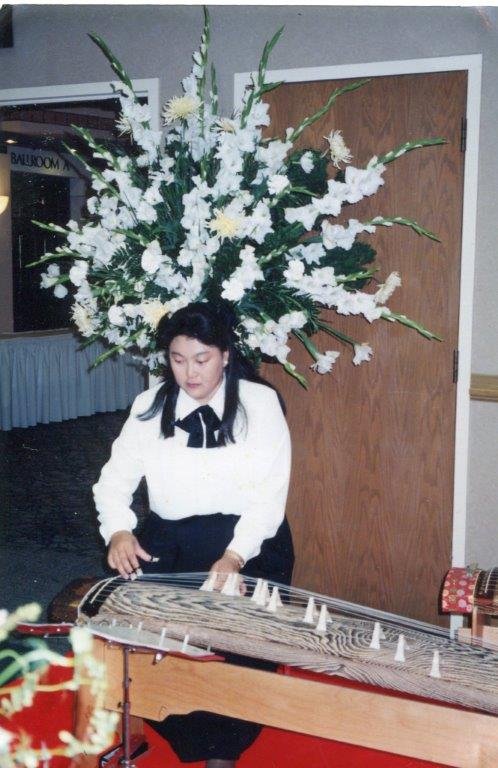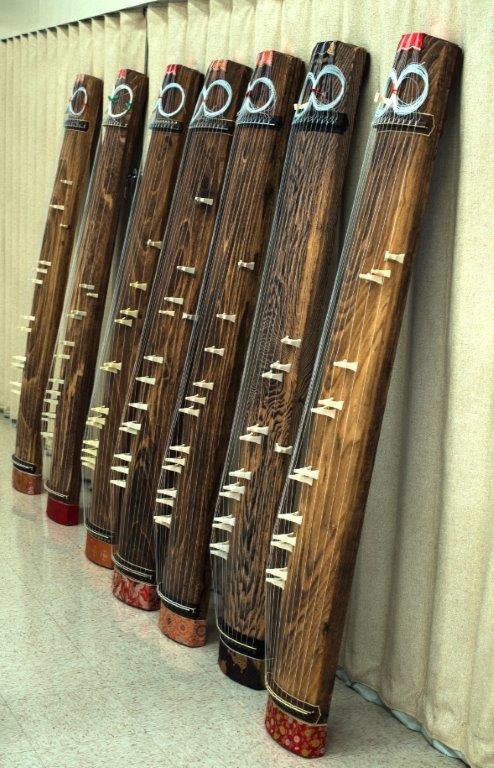Koto, also called kin, long Japanese board zither having 13 silk strings and movable bridges. The body of the instrument is made of paulownia wood and is about 190 cm (74 inches) long. When the performer is kneeling or seated on the floor, the koto is held off the floor by two legs or a bridge-storage box; in most modern concerts, the instrument is placed on a stand so the performer can sit on a chair. The koto is played by plucking the strings with the thumb and first two fingers of the right hand, which are fitted with ivory plectrums called tsume. The left hand, in traditions after the 16th century, may alter the pitch or sound of each string by pressing or manipulating the strings to the left of the bridges. Various pentatonic tunings are used, depending on the type of music being played.
The koto appeared in the Japanese court during the 8th century and was called the gakusō. Schools for the bourgeois were established in the 16th century. Two of these—Ikuta (started in the 17th century) and Yamada (opened in the 18th century)—continue to the present day. Solo (danmono) and chamber (sankyoku) music dominate the repertory, and in the latter form the koto player often sings as well.
One on One Lessons
JFGM Member $55 | Non-Member $60
Upper Garden | Education Center
1 Hour Length
Koto and materials included
Registration Required, Admission included



